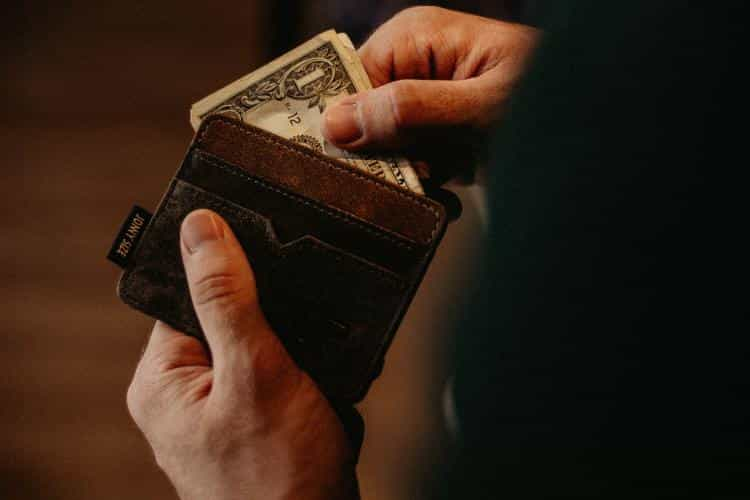A crypto wallet, such as one used for the popular cryptocurrency Monero, is any kind of storage solution that corresponds with public cryptocurrency ledgers and contains the public and private keys needed to store, access, and retrieve one’s digital assets.
Monero wallets can come in any form that could be used to contain these keys. They could be purely online, on a mobile or computer app, a special piece of hardware, or a slow and complex “full node” solution.
Whichever type of wallet you choose, it’s important to pick one that fits within your use case and security needs. To keep your Monero wallet safe, check out the tips and ideas below.
1.) Always Enable Two-Factor Authentication (2FA) on Your Monero Wallet
Two-factor authentication (2FA) or multi-factor authentication (MFA) use extra security steps to confirm that the correct person is in possession of the device used to access a Monero wallet.
With one-factor authentication as the default, you will be asked to provide a password or passcode as the first and only step. If you don’t enable 2FA, identity verification stops here, and any hacker that gets access to your password can get into your wallet.
Enabling 2FA or MFA adds one or more steps for a would-be hacker to complete, which can dramatically improve your wallet’s security by slowing down or preventing access by unauthorized parties.
2FA and MFA methods include, but are not limited to, such things as sending you an SMS or an email with one-time passwords (OTPs) which “prove” the possession of an owner’s device, as well as biometrics information, such as face, retina, fingerprint, or voice identification.
2.) Avoid SMS for 2FA
Unfortunately, not all 2FA methods are equally secure. SMS messages can easily be compromised through SIM card spoofing or other methods.
Email is slightly better but purpose-made authentication apps such as Google Authenticator, Microsoft Authenticator, or Authy, as well face and biometric 2FA methods, are even safer.
In situations where you may need to use less-safe authentication methods such as SMS, consider using an alternate wallet to cut your potential losses.
3.) Always Be Skeptical of Security Messages
Fake security messages are often used by hackers and other criminals to fool wallet holders into giving up their credentials.
Keep a critical mind about the intent and origins of any SMS or email related to crypto and never give anyone access to your private key details. Never click on suspicious links or download attachments on emails you’re not completely certain of.
4.) If Something Is Too Good to Be True, It Is
Crypto scammers may attempt to contact you in unusual places, such as on social media sites or even in public functions. If they’re promising you anything unbelievable, like doubling your money in a month, then you’re always better off ignoring them.
5.) Use Secure Internet Connections
Cybercriminals can easily access any device connected to an unsecured internet connection. Once they’ve gained access, they can do any number of things, from spying on your activity to logging your keystrokes, either of which could be an avenue for compromising your crypto wallet.
While avoiding public wi-fi networks is a good first step, you aren’t quite safe when you’re using your home internet connection either. Using a virtual private network (VPN) service can help prevent these threats from freely accessing your devices and wallet. Additionally, avoid phishing websites and clicking on questionable links, that could leave unwanted trojans and cookies on your devices.
6.) Consider Maintaining Multiple Wallets
There aren’t any practical limits to the number of crypto wallets you can maintain, so there’s no real reason to keep all your eggs in one basket.
Spreading your Monero and other crypto coins throughout different wallets can help mitigate your potential losses in case one is compromised. Consider maintaining at least one for regular use and another more secure one for long-term storage.
7.) Be Smart About Passwords
Changing your passwords regularly can go a long way towards keeping your wallet and coins secure.
However, it isn’t enough to simply change your passwords every few months or so. You have to ensure that your password is sufficiently complex to delay or prevent hackers from using brute force methods for accessing your digital assets.
Additionally, avoid using pets or children’s names as part of your password, answering online quizzes, or giving seemingly innocuous personal details to strangers, as these have all been avenues for password phishing attacks that have compromised crypto wallets.
8.) Understand Your Monero Wallet’s Pros and Cons
Every wallet app and type has its pros and cons when it comes to balancing security and easy access. Taking some time to study your wallet’s features and limitations can help you make a more informed choice that will help you better avoid phishing attacks and other scams.
Keep Your Monero Wallet Safe from Scams and Phishing
While Monero’s developers have done a stellar job of creating a cryptocurrency with truly anonymous and secure features, the human factor remains a key vulnerability, particularly when accessing one’s Monero wallet. By taking the steps above, you can go a long way in ensuring your wallet and coins remain safe from unauthorized parties.
